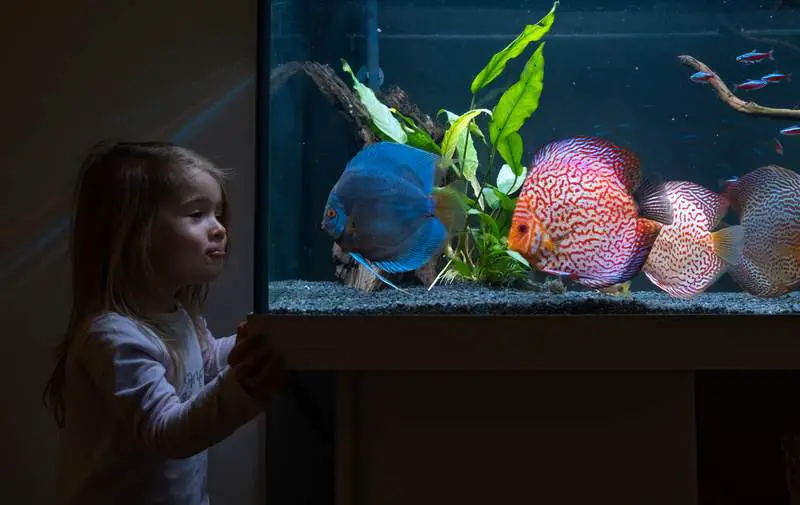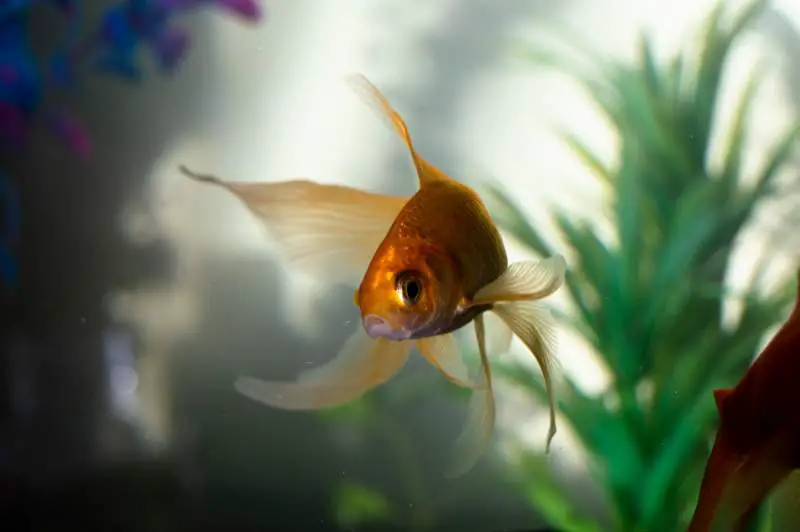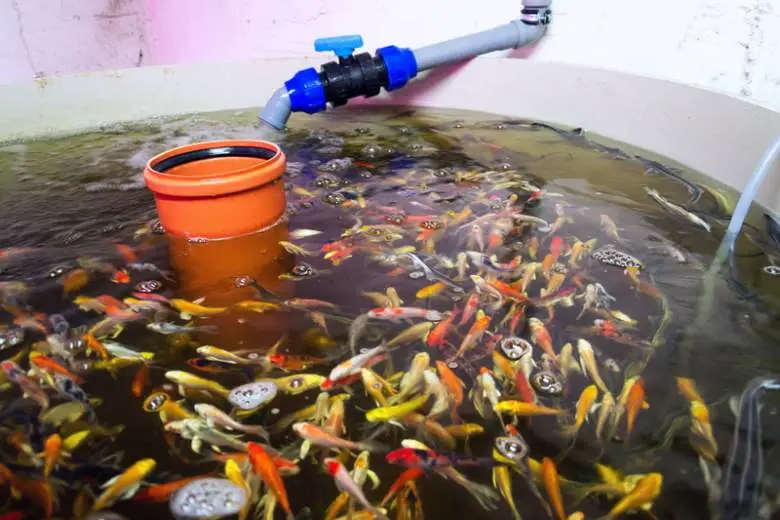When building an aquaponics system, you’ll already know the direct link between plants and fish and how they both require each other to survive. Light is essential for plant growth, yet many new growers are not sure about their fish’s position.
Do fish need light in aquaponics? Even though plants need sunshine, fish like to have some shade. While fish don’t need sunlight to grow and thrive, they need periods of light and darkness like fish in an aquarium. Without changes in day or night periods, many fish can become sluggish, sick, or stop eating. Based on where your aquaponic system is, you’ll need to provide your fish with light, be it artificial or indirect sunlight, daily.
Why Fish Need Light in an Aquaponics System?
Fish only need light so they can see their food, yet there are newer studies showing light delivers additional advantages for your fish.
Aquatic animals are light sensitive by nature, and based on studies, fish productivity, activity, and overall health may be affected by light intensity, wavelength, and duration.
Some light types control temperature and can be suitable substitutes for heaters. So, if you live in colder climates, it allows you to raise fish used to thrive in warmer climates, such as tilapia.
Adding artificial light to your aquaponic fish tank can help with egg development and health, as well as helping avoid stress and poor health.
Choosing Light for Your Fish
One thing you will find is whether you have an indoor aquaponics system or an outdoor one. If your garden is outdoor, you may not need additional lighting since you can use daylight and night.
However, if your garden is undercover or indoors where light is potentially limited, you could require such additional lighting. You may need light, yet you will need to make sure it is the right light for your fish.
LED Light
Although on the newer end of the scale, it is recommended to use LED lights if possible. They cost more upfront, yet they can easily be adjusted, and there is little heat output. The significant advantage with LED lighting systems is they are far cheaper to run than alternatives.
Incandescent and Fluorescent Lighting
Incandescent and fluorescent lamps are other types of lights that can be used as well. However, these forms have minimal functionality, and it is not possible to change the strength or temperature of the light.
If you plan to use these, do so with extra caution, as they can lead to abnormal light-induced responses like your fish being too aggressive to each other. Heat problems caused by these types of lights may also influence the health of your fish.
Light Distribution
The light distribution also needs consideration, so it covers all your tanks rather than just part of it. This is truer should there be any heat output from your lights, as it could cause warm and cold spots.
Lighting Periods for Aquaponic Fish Tanks
You will never leave your light on around the clock as this would give the impression of permanent light and doing so would have severe effects on the health of your fish.
Besides fish health, you could find an increase in the number of algae that grows in your system. Once you have an influx in your system, it can begin consuming nutrients meant for your plants and your fish. One area that would be affected is the amount of oxygen available in the water for your fish.
The best way to control this is by using a timer for your lighting system. You use one already for your water pump, so adding another for your lights wouldn’t be an issue.
Aquaponic System Requirements
Knowing that you should have a period of nighttime for your fish to rest, it is handy to understand the other areas of your system at the same time.
Here’s a quick breakdown of other vital areas for your fish and every area of your aquaponic garden.
Water Source
Water is among the most critical areas of your entire system. Both your plants and your fish rely on it to survive.
When you first build your system, you will cycle it, so the water is suitable for your fish and plants. However, over time, you need to top up this water to counteract the effects of evaporation and use of your system.
You have many options available, yet many gardeners use regular tap for this. It is okay to use this rather than harvested rainwater, yet you must understand your municipal water.
You would need a separate tank for this use where you fill it with tap water and mix in some ascorbic acid; let this sit for a couple of days so the ascorbic acid will self-neutralize. It needs this second tank because you can’t put chloraminated water or ascorbic acid into a live aquaponics system.
Water Temperature
The water temperature can be affected through your lighting, although it would cool again when lights are not used. Tilapia, Bass, Goldfish, and Catfish are good examples, and like warmer water with temperatures of 65° to 85°F. Fish such as Trout are cold water and thrive in ranges of 55° to 65°F.
Both kinds of fish can be affected if water temperatures are too warm or too cold.
Water pH Levels
Your lights and the temperature can lead to changes in your water’s pH levels. In your system, you will see changes if ammonia rises from your fish or when you add water to top up the levels.
You must monitor the pH levels as often as you can, so you have a good understanding of what they are and how they stand against the ideal levels of a pH at 6.8 to 7.4.
Oxygen for Fish
Most fish are happy when they have dissolved oxygen ranges 5-12 mg/L. If they are too low, and your fish suffer. You could find fish stress, have stunted growth, and probable death.
Oxygen depletion can occur through heat from the summer or through your lighting. The design of many aquaponics systems can introduce dissolved oxygen by the crashing of return water. However, it doesn’t hurt to use an air pump and air stone to be safe.
Oxygen for Plants
When you use gravel in your flood and drain system, this offers near-perfect oxygen levels getting to the roots of your crops. However, there will still be oxygen in the water they absorb, which would have an impact if it weren’t present in the ideal volume.
Also read: Do Fish Breed in Aquaponics?
Conclusion
With the above, you can see that while it is good to have some light for fish, you need to be sure that this light may not generate heat.
The type of fish you have is powerful dictators to lights that heat or not, as is the growth of algae. You will get algae growth from sunlight hitting the water, and you would need to make sure no light gets in the side of your tank.
Since fish don’t like direct light, only introduce moderate light, and make sure they have a dark period for 8 hours as a minimum.





